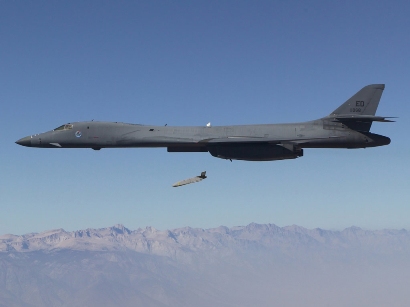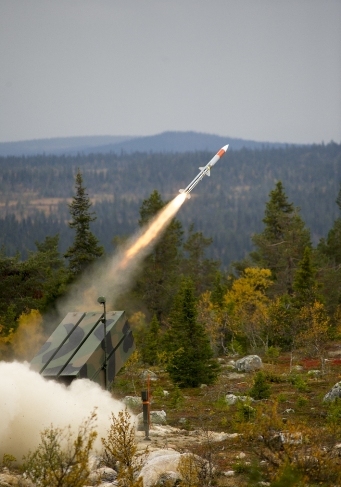
Designed for launch from both ships and planes such as the B-1B strategic bomber, the LRASM would depend less on intelligence, surveillance and reconnaissance platforms, network links and GPS navigation in electronic warfare environments, while providing innovative terminal survivability approaches and precision lethality in the face of advanced countermeasures. Photo courtesy: US Air Force/ DARPA
ORLANDO, FLORIDA (BNS): US's new Long Range Anti-Ship Missile (LRASM) has undergone third successful air-launched flight test earlier this month.
The missile test was conducted over the Sea Range at Point Mugu, California wherein a US Air Force B-1B bomber released the LRASM prototype, which navigated through planned waypoints receiving in-flight targeting updates from the weapon data link.
The missile performed as expected during the low altitude flight, Lockheed Martin, which has developed the new weapon, announced on Feb 19.
The test, conducted on Feb. 4, was in support of the Defense Advanced Research Projects Agency (DARPA), US Air Force and US Navy joint-service LRASM programme, it said.
LRASM is a precision-guided anti-ship standoff missile leveraging the successful Joint Air-to-Surface Standoff Missile Extended Range (JASSM-ER) heritage, and is designed to meet the needs of US Navy and Air Force warfighters in a robust anti-access/area-denial threat environment.
The JASSM-ER, which recently completed its operational test programme, provides a significant number of parts and assembly-process synergies with LRASM, resulting in cost savings for the US Navy and Air Force Offensive Anti-Surface Warfare programmes, Lockheed said.
The LRASM is being develpoed as an air-launched offensive anti-surface warfare weapon to counter the growing maritime threats in anti-access/area denial (A2/AD) environments. Once operational, LRASM would play a significant role in ensuring military access to operate in open ocean/blue waters and the littorals due to its enhanced ability to discriminate and conduct tactical engagements from extended ranges, according to the DARPA.
 Previous Article
Previous Article Next Article
Next Article













The Indian Air Force, in its flight trials evaluation report submitted before the Defence Ministry l..
view articleAn insight into the Medium Multi-Role Combat Aircraft competition...
view articleSky enthusiasts can now spot the International Space Station (ISS) commanded by Indian-American astr..
view article